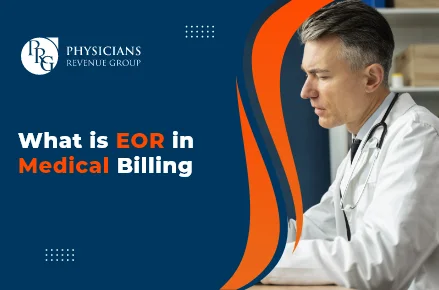
Email: info@prgmd.com | Call: +1 (630) 242-6474
Business hours: 9:00 to 5:00 | Monday to Friday
Email: info@prgmd.com | Call: +1 (630) 242-6474
Business hours: 9:00 to 5:00 | Monday to Friday

Table of Contents
ToggleCMS (Centers for Medicare and Medicaid Services) offers two ways for healthcare providers to get recognized and participate in the Medicaid and Medicare programs – these are provider enrollment, and provider credentialing services. The significant difference in enrollment and credentialing is the application process to become a Medicare or Medicaid provider. Enrollment in healthcare is the first step for all providers who wish to partake in Medicare and Medicaid programs. While credentialing is a secondary process that some providers need, not all. Credentialing entails verification of providers – whether or not they meet specific qualifications to participate in the programs.
Let’s dive deep to fully understand the differences between credentialing in medical billing and enrollment in healthcare.
Payer enrollment is requesting enrollment in healthcare insurance panels and medical billing plans. If you are a medical practitioner and want quick payments from your patient’s insurance, you must enroll with the payers. The process requires many application documents and necessitates organization on applicant’s end – since the enrollment process in healthcare is detail-rich.
Once the applications get submitted to the payers – a healthcare provider’s medical credentials must be submitted, along with the supporting documentation. Furthermore, it is also essential that a provider’s credentials are verified before a practice is accepted by payers. If all goes smoothly, a contract will be made and signed.
The enrollment processes for different payers vary. Furthermore, different enrollment processes can be put to use for the new medical staff and when medical practices are applying for staff members to Medicare.
Different types of enrollment have varying institutional references. For instance, CMS is the typical go-to resource for enrolling a practice into a Medicare program – the same as commercial payer enrollments.
The National Association of Medical Staff Services offers thorough documentation on a payer’s enrollment steps in an ideal setting – the steps are as follows:
Credentialing is one of the most exhaustive processes for healthcare practitioners – verifying their:
Medical credentialing and physician credentialing can oftentimes be used interchangeably. To avoid confusion, medical credentialing applies to professionals who administer care, including:
Secondly, the individual physician credentialing is also exhaustive – taking over 4 months to complete. Physicians must submit credentialing data, including:
However, this basic information must accompany with additional and extensive details, including:
The requirements of medical credentialing include:
All of these items come in handy when a medical practice applies. The enrollment and credentialing specialists file this information in their databases to verify and format the submissions. Here, the final verification report is archived automatically.
Physician credentialing and provider enrollment in healthcare are two critical processes for every healthcare organization. While both seem unrelated, the two processes are interrelated. Provider enrollment is enrollment of healthcare providers with private health and government insurers. On the other hand, physician credentialing is a process of verifying a physician’s credentials and privileges for being able to practice at a healthcare facility.
One essential requirement for a provider’s enrollment in healthcare is proof of physician credentialing. In other words, a healthcare practitioner cannot enroll with an insurer until and unless they undergo credentialing. Insurers must verify that a particular provider is qualified to offer care before they can start billing them for care services.
Similarly, most healthcare facilities will not grant physician privileges unless they properly enroll with the facility. The provider typically does enrollments; however, credentialing is usually done by the health insurance company. Again, there are some cases where different parties complete the two processes. For instance, if a provider is credentialed through CMS, they must submit an enrollment application to CMS.
1- First off, make a list of everything you will need for provider credentialing applications, including:
2- Collect the provider’s National Provider Identifier (NPI), Federal Income tax ID, and Clinic EIN; all of this information must be with information on the W-9 application.
3- Get a provider’s CAQH ID after registering them with CAQH. Verifying that CAQH has an updated W-9 and liability certification for the provider is important.
4- Ensure your work and graduation dates are in month/year format. CAQH might reject your application if it is not provided with accurate dates.
5- CAQH shall email the healthcare provider each quarter to re-attest that the information in the portfolio is up-to-date for taking prompt actions.
6- It is always specified if there is a requirement for a provider’s authentic written signature for processing the healthcare credentialing.
7- Filling out and submitting a set of applications to every health insurance provider
8-It is important to follow up on the provider’s credentialing application with health insurance providers, as they are notorious for not returning calls if anything is missing from the application. Throughout the credentialing process – keep track of all calls and online discussions.
9- It is important to follow up on the provider’s credentialing application with health insurance providers, as they are known for not returning calls if anything is missing from the application. Throughout the credentialing process – keep track of all calls and online discussions.
10- Lastly, maintain copies of all/any healthcare applications and contracts you send out and the health insurance payer’s credentialing and enrollment letters.
Both credentialing and enrollment in healthcare ensure:
Share:
Categories
Recently Added

What is an ABN in medical billing?

What does a Clearinghouse do During Claims Submission?

What is EOR in Medical Billing?
We Would Love to Assist You!
We treat your data confidentially and don’t share any information with a third party.